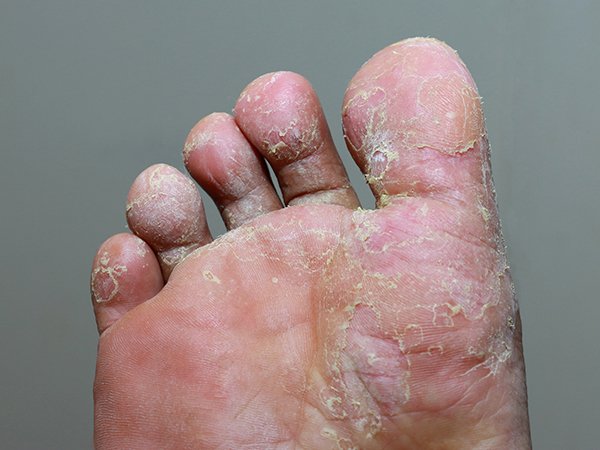Athlete’s foot, also known as tinea pedis, is a common fungal infection that affects the skin of the feet. It is characterized by itching, redness, and cracking of the skin, particularly between the toes. In this article, we will explore the causes, symptoms, and treatment options for athlete’s foot.
Causes
Athlete’s foot is caused by various types of fungi, most commonly the Trichophyton species. These fungi thrive in warm, moist environments such as locker rooms, swimming pools, and public showers. The infection is usually spread through direct contact with contaminated surfaces or by coming into contact with the infected skin of another person.
Certain factors increase the risk of developing athlete’s foot, including:
- Warm and Moist Environments: Exposing the feet to warm, damp conditions for prolonged periods creates an ideal environment for fungal growth.
- Poor Foot Hygiene: Inadequate foot hygiene, such as not washing or drying the feet properly, can contribute to fungal infections.
- Shared Spaces: Using communal areas where the infection is common, such as public showers or gyms, increases the risk of contracting athlete’s foot.
- Weakened Immune System: Individuals with weakened immune systems, such as those with diabetes or HIV/AIDS, are more susceptible to fungal infections.
Symptoms
The symptoms of athlete’s foot can vary but often include:
- Itching: Itching and a burning sensation are common symptoms of athlete’s foot. The itching is typically more severe between the toes.
- Redness and Scaling: The affected skin may become red, swollen, and scaly. The skin can also appear dry and flaky, with small blisters or cracks.
- Peeling and Cracking: The skin between the toes may peel and crack, leading to discomfort and pain.
- Blisters: Fluid-filled blisters may develop on the feet, especially on the soles or sides.
- Odor: Athlete’s foot can cause an unpleasant odor due to bacterial or fungal overgrowth.
Treatment
Athlete’s foot can often be treated with over-the-counter antifungal medications, including creams, sprays, or powders. These medications typically contain active ingredients like clotrimazole, miconazole, or terbinafine, which help eliminate the fungus.
In addition to using antifungal medications, the following measures can aid in the treatment and prevention of athlete’s foot:
- Keep Feet Clean and Dry: Wash your feet daily with soap and water, and dry them thoroughly, paying special attention to the areas between the toes.
- Wear Breathable Footwear: Choose shoes made of breathable materials like leather or mesh to help reduce moisture and promote air circulation.
- Change Socks Regularly: Wear clean, dry socks every day, and consider using moisture-wicking socks that help keep the feet dry.
- Use Antifungal Powder or Spray: Applying antifungal powders or sprays to your feet and shoes can help prevent fungal growth and reinfection.
- Avoid Going Barefoot in Public Areas: Wear sandals or flip-flops in public showers, locker rooms, and pool areas to minimize exposure to fungi.
- Treat and Prevent Sweating: If excessive sweating is a concern, use antiperspirant powders or sprays specifically formulated for the feet.
If over-the-counter treatments are ineffective, a Dermatologist in Islamabad may prescribe stronger antifungal medications or oral medications. They can also help diagnose any underlying conditions contributing to recurrent or persistent athlete’s foot.
Conclusion
Athlete’s foot is a common fungal infection of the feet caused by fungi. It is characterized by itching, redness, scaling, and cracking of the skin. The infection is commonly spread in warm, moist environments and through direct contact with contaminated surfaces or infected individuals. Treatment typically involves using over-the-counter antifungal medications and practicing good foot hygiene. Preventive measures such as keeping the feet clean and dry, wearing breathable footwear, and avoiding walking barefoot in public areas can help reduce the risk of developing athlete’s foot. If the infection persists or worsens, it is advisable to seek help from a Skin Specialist in Lahore for further evaluation and treatment options.
